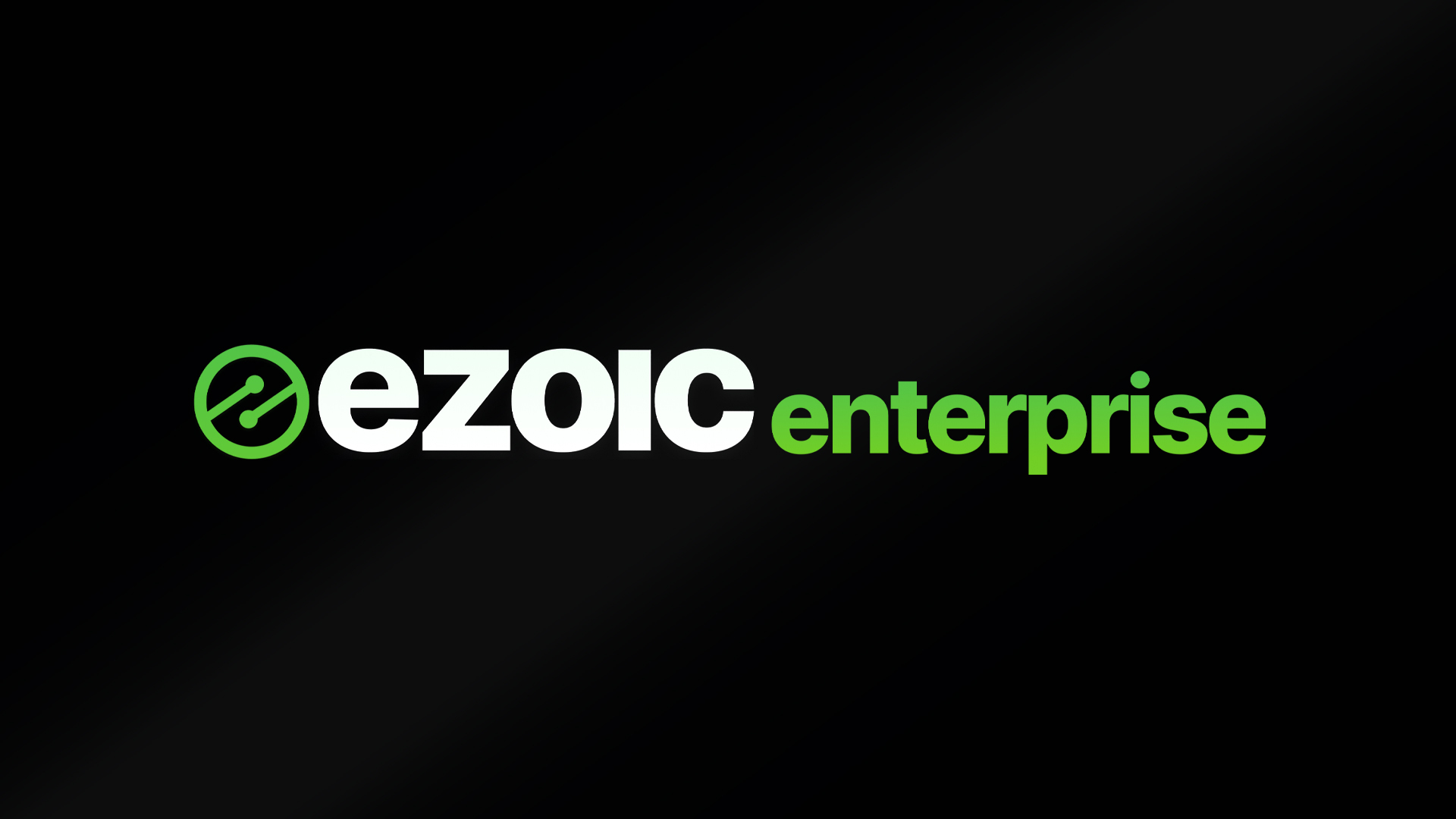
Which WordPress Themes Work Best For Programmatic Publishers

Get helpful updates in your inbox
Which WordPress Themes Work Best For Programmatic Publishers
Personally, I own and operate dozens and dozens of different WordPress websites. Additionally, Ezoic works with thousands of publishers using WordPress worldwide. They all serve different audiences and have different goals, but the purpose of this post is to tell you about what makes some more successful than others when using this CMS.

One of the great features of the WordPress platform is how easy it is to interchange layouts by applying different themes. However, this also creates a paradox of choice: which WordPress theme is best for all the potential types of websites, blogs, and digital properties?
Below, I’ll be specifically reviewing what data says about identifying the best WordPress themes for ad-driven and programmatic publishers. This means focusing on website owners who derive the majority of their revenue from displaying ads on their articles and pages. I’ll discuss the role that layouts play in total ad revenue and discuss how different strategies affect session revenue.
What we’ve learned from testing millions of website layouts
Ezoic is a machine learning platform for publishers. This means content creators and digital property owners use our platform to automatically test different website elements by traffic source, time of day, landing page, and thousands of other variables and then delivers the optimal results to each segment individually. Over the years, this has led to a lot of interesting data about the nature of ad revenue, user behavior, and website traffic trends.


We’ve talked before about all the data we’ve collected about the role of user behavior on ad revenue; however, we haven’t shared a ton of information about how website layouts affect user behavior, revenue, and overall website traffic. We know that addressing actual UX vs. Fake UX will allow publishers to improve ad earnings, but what do we know about the role of layouts?
We’ve found that the layout and ad combination on any given page plays a significant factor — if not the most important role — in both the visitors experience metrics on a site and the overall session revenue earned from that visit. The variables below are the ones we’ve found to have the most dramatic effect on bounce rate, pageviews per visit, and overall EPMV (earnings per thousand visitors).
- Menu location
- Menu/navigation type and style
- Background color
- Sidebar location
- Ad placements/locations/types
- Ad density
There are certainly more factors, but these play a major role when tested against different traffic sources. Let’s look at a case study to see just how important some of these factors can be in the right context.
The impact that WordPress layout features have on UX and revenue
This first case study is simply looking at mobile visitors who landed on a specific website’s homepage. In this experiment, the system was testing to see how different mobile layouts affected visitor behavior and overall session revenue. The case study below is only looking at menu location and navigation style.

Visitors coming to this site’s homepage from Google search responded well — compared to site averages — to this style of menu. However, when we looked at how visitors coming from social media platforms responded to the same menu, we got a very different result.

Yikes! The social media visitors responded very poorly to this type of menu when compared to how organic search visitors responded to the same menu. The bounce rate is nearly 50% higher and the earnings are nearly cut in half!
“But, Tyler, maybe those visitors are the key variable here, not the menu?”
First, I applaud you for accounting for the fact that every visitor is different; however, all visitor behavior is malleable as well. As we continue this experiment, we can see exactly what I mean.

We can see now that these same visitors from Google search responded slightly worse to the top of the page drop down menu — compared to the top right menu. Bounce rate is incrementally up, pageviews per visit and session duration are down around 15%, and EPMV is about $1 USD less. How did the social media traffic respond to the same menu?

The social media visitors responded much better to this menu than the top right corner menu. Pageviews per visit and session duration improved dramatically, and bounce rate has now dropped down to be much closer to the Google search segment. Most importantly, EPMV is now nearly the same as the Google traffic (when they have the same menu) — a +70% improvement!
So what does this tell us? Well, it’s just a single example of how small variables like a mobile menu placement and type can dramatically influence both visitor behavior and revenue. But, it also tells us a little something about how we define “the best”.
The best menu for Organic search visitors was different than the best menu for social media visitors. As we segment these audiences more and more, we learn more and more about how these factors play a role in overall visitor experiences and ad earnings. Publishers should be really thinking about this information before they do a lot of hand-wringing about potential site redesigns, etc.; as in many cases, that time should be spent understanding different audience segments and how to treat them differently.
But, Tyler, I thought you were going to give me advice about WordPress themes?
Fine. I will, but keep the information above in mind; as I’m guessing that a lot of people reading this are looking for a single great theme that is going to delight visitors and improve revenue, and while a theme could potentially improve both of those things, a wholesale approach to a single website layout is not optimal.
Think mobile when selecting WordPress themes
It’s not a coincidence that I selected a mobile example for the case study above. I consistently find that publishers ignore their mobile traffic despite the fact that the majority of their visitors actually visit on a mobile device. This means the room for improvement in your layout or theme likely exists more on mobile than on desktop.

When selecting a mobile theme, ensure that there is flexibility in how you can configure the menu and article layouts. These are really important things you should be testing and monitoring; as we saw above, even slight changes could be costing you 75% of your EPMV for single traffic segment.
Ezoic has a mobile layout tester that will allow you to automatically test these things on just mobile traffic — and then deliver the elements that perform best in each specific segment (for those really interested in their mobile traffic).
Think about all the variables in the equation
One of the biggest mistakes I see publishers make on WordPress is selecting a theme that looks different from other websites simply for the sake of standing out. Choosing a theme purely on aesthetics beats the entire point of treading this article. Taking a data-driven approach means ignoring the one you think looks the best and selecting the one that data says your visitors prefer.

You should be thinking about selecting themes that do not over-complicate things like navigation or the organization of content. These elements of the site should be simple and flexible; giving you the ability to manipulate them easily; based on what core user experience metrics and Google Analytics data tell you.
But, before we go any further into taking a data-driven approach, I should also mention two big elephants in the room when selecting a WordPress theme.
Your theme will affect pagespeed
Your theme will also affect future functionality
The effect of WordPress themes on website speed
To my point earlier about finding a WordPress theme that is different looking than all others. Generally, the rarer the theme, the more likely that theme is to be built improperly; meaning excess code, sloppy construction, and other incompatibilities.

Why does this matter? Well, WordPress — and all other popular CMS systems — are constructed in a general way that provides all the great modular features we love; however, there is a downside. The downside is that the construction of these systems is not necessarily optimal for speed.

Most sites using WordPress, and these other CMS systems leverage a lot of plugins and themes that are built in a bit of a clunky way. This leads to slightly longer load times. Ever throw your website into a pagespeed tool — feeling like you’ve done everything possible to make your site fast — only to find your score be in the low 80’s on desktop and mid 60’s on mobile?
This is OK, and you definitely don’t need to be looking into retrofitting your site to be a CMS-free pure HTML site that is hand-tuned by an expert webmaster. Those pagespeed tools larger don’t matter. You just need to be sure that the theme you select isn’t particularly slowing your site down. The most important thing to keep in mind when selecting a WordPress thing is…
Find a WordPress theme that has the attributes you need
Rather than relying on the theme that might be catching your eye, why not focus on all the things you need out of your theme first. Consider the following…
Does the theme…
- Have lots of potential ad locations
- Have a lot of different menu options
- How adjustable are features like the sidebar
- Can you turn off sections or elements of the theme that could affect visitors negatively
- Work well with common plugins
So, now that we know what we want. Here are a few good tips on what to look for.
Look for themes that are…
- Proven, popular themes
- Built by trusted builders
- Flexible and easily customized
- Built without excess or overly complex code/scripts
Google search the theme for reviews and potential conflicts that exist. While it may be tempting to try out a new slick looking theme you found in the deep throws of the internet, you’re statistically better off selecting a popular theme (that’s fast) with good reviews.
Selecting the best WordPress theme for your audience
Ultimately, the best WordPress theme for your audience is the one that measurably provides the best results. This means lower bounce rates, higher EPMVs, etc. The best way to start this is by delivering different types of visitors different themes based on how they respond to different elements (see the case study above).
Some level of personalization will likely offer far more benefits than a complete redesign. Website redesigns are largely considered money pits for publishers and should really only be considered when a site is preparing for a major change (i.e. mobile responsive redesign — which you probably should have done a long time ago).

Look at the site above. It leveraged our machine learning system to adjust the layout on every session to match the visitor’s projected preferences. It was the only change made in this entire time span. It resulted in significant organic traffic growth; as it massively improved user experience metrics (which are known to drive SERP improvements).
This is the power of segmenting visitors and delivering them preferred experiences. It has far more measurable benefits than standalone redesigns do.
If you are going to explore a new WordPress theme, our data tells us that the ones that perform the best are popular themes that are built well. These usually perform the fastest and have the least number of conflicts with other plugins and systems. This typically means that they are a bit faster as well.
Additionally, themes that offer a fair amount of customizable features can help you ensure that you don’t lock all visitors into experiences that they don’t like. Being able to adjust things like menu location, type, and other navigational elements can help you ensure that you’re providing your visitors with a preferred experience.

Lastly, if you want to ensure you’re able to maximize ad revenue with your theme, you’re going to want that same amount of flexibility. Ensure your theme does not waste excess space with glitzy features or wasteful elements. You want a lot of potential ad locations on your website for testing. The more simple the design, the more placement locations you’ll likely have.
More questions or thoughts on the subject? I talk about this topic a lot on my podcast, The Publisher Lab. You can also leave questions and comments below.

Tyler is an award-winning digital marketer, founder of Pubtelligence, CMO of Ezoic, SEO speaker, successful start-up founder, and well-known publishing industry personality.
Featured Content
Checkout this popular and trending content

Ranking In Universal Search Results: Video Is The Secret
See how Flickify can become the ultimate SEO hack for sites missing out on rankings because of a lack of video.
Announcement

Ezoic Edge: The Fastest Way To Load Pages. Period.
Ezoic announces an industry-first edge content delivery network for websites and creators; bringing the fastest pages on the web to Ezoic publishers.
Launch

Ezoic Unveils New Enterprise Program: Empowering Creators to Scale and Succeed
Ezoic recently announced a higher level designed for publishers that have reached that ultimate stage of growth. See what it means for Ezoic users.
Announcement
